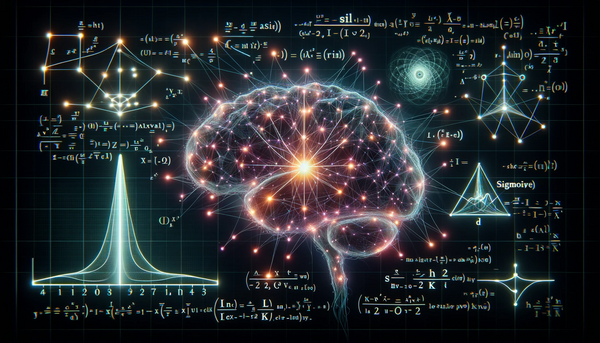Behind Machine Learning: A Guide to Vectors
Introduction
Why should you care about machine learning? In simple terms, machine learning helps us make sense of the world, from recommending your next favorite song to diagnosing diseases earlier than ever before. This is the future, and you're a part of it.
Fear not! This article aims to break down these complex ideas into bite-sized, easy-to-understand pieces. So let's jump in!
Vectors and Their Properties
Imagine a vector as an arrow pointing in a specific direction. This arrow has both a direction and a length (magnitude). In machine learning, each "arrow" can represent a piece of data, like the age, income, and purchasing history of a customer. Knowing the properties of these arrows helps us understand how to manipulate them effectively.
Knowing how vectors behave helps us manipulate them, leading to better machine learning models. Think of it like learning the rules of chess; you have to know how each piece moves to play the game effectively.
Distance Between Vectors
The distance between vectors is like the physical space that separates two points on a map. In machine learning, this "space" helps us gauge how similar or different two pieces of data are. For example, if you're building a recommendation system, you'll want to recommend items that are "close" to what the user already likes.
Sum and Difference of Vectors
Adding Vectors
Adding vectors is like following two sets of instructions to go from Point A to Point B and then to Point C. You walk along the first vector (arrow), and then you walk along the second one. Where you end up is the sum of those vectors.
Subtracting Vectors
Subtracting vectors is like walking backward. If you walk from Point A to Point B and then walk back, you've essentially subtracted the second walk from the first.
The Dot Product and Geometric Dot Product
The Dot Product
The dot product tells us how aligned two vectors are.
Example:
You have two vectors, each representing the hours you spent on three tasks for two different projects:
Project A: [2,4,1][2,4,1] (2 hours on Task 1, 4 hours on Task 2, and 1 hour on Task 3)
Project B: [1,4,0][1,4,0] (1 hour on Task 1, 4 hours on Task 2, and 0 hours on Task 3)
To find out how aligned your time investment is between these two projects, you perform a dot product:
(2×1)+(4×4)+(1×0)=2+16+0=18(2×1)+(4×4)+(1×0)=2+16+0=18
Here's what this calculation is telling you:
- For Task 1, you invested 2 hours in Project A and 1 hour in Project B. The product 2×1=22×1=2 represents the alignment for this task.
- For Task 2, you invested 4 hours in both projects. The product 4×4=164×4=16 represents a high alignment, indicating you equally prioritized this task in both projects.
- For Task 3, you invested 1 hour in Project A and 0 in Project B. The product 1×0=01×0=0 shows there's no alignment for this task between the projects.
The sum of these products, 18, quantifies the overall alignment of your time investment in these projects. A higher number would suggest more alignment, while a lower number would indicate less.
Geometric Dot Product
This is an extension of the dot product, giving us insights into the angles and relationships between vectors. For example, if the geometric dot product is zero, the vectors are orthogonal (perpendicular), meaning they are completely independent of each other.
The geometric dot product is an extension of the dot product you're already familiar with. In the context of the geometric dot product, the alignment or "agreement" between vectors is often related to the angle between them.
Here's how:
- If the geometric dot product is positive, the angle between vectors is less than 90 degrees, indicating that they are somewhat aligned in the same general direction.
- If the geometric dot product is zero, the angle between vectors is 90 degrees. This means the vectors are orthogonal or perpendicular to each other. In other words, they are independent, and one has no effect on the other.
- If the geometric dot product is negative, the angle between vectors is greater than 90 degrees, suggesting that they are moving in somewhat opposite directions.
Example:
Let's say you're comparing two vectors that represent the growth of two different investments over time.
- Investment A: [2,3,1][2,3,1]
- Investment B: [−1,−2,−1][−1,−2,−1]
The geometric dot product will be (2×−1)+(3×−2)+(1×−1)=−2+−6+−1=−9(2×−1)+(3×−2)+(1×−1)=−2+−6+−1=−9.
The negative result (-9) suggests that these two investments are moving in somewhat opposite directions. If one is increasing, the other might be decreasing.
In summary, understanding the geometric dot product can provide you with deep insights into the relationships between different sets of data, be it in finance, healthcare, or any other domain where machine learning can be applied.
Conclusion
Vectors are the building blocks of machine learning, encapsulating data in a way that machines can understand and manipulate. Understanding these basics is like knowing the rules of the road before setting out on a journey. The more you grasp these foundational concepts, the smoother your ride in the machine learning world will be!





